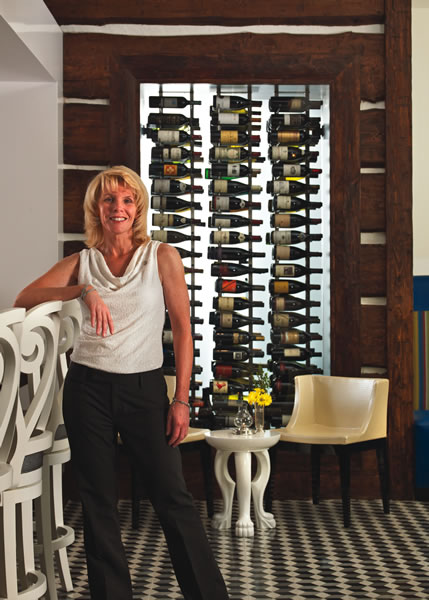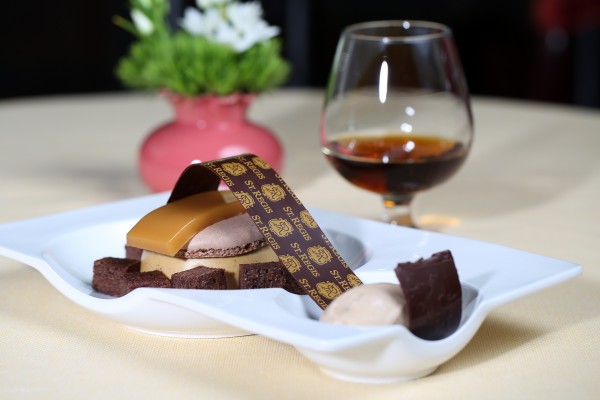Pairing food with wine this season is made easy with the assistance of The St. Regis Aspen Resort’s sommelier, LeeAnn Kaufman.- By Amiee White Beazley

 As the snow falls, the fire roars and decadent food, sometimes rich and meaty, is served with bold-flavored wines. But sometimes choosing the best wine for your dish isn’t easy. To help guests make an expert wine selection, The St. Regis Aspen Resort’s sommelier LeeAnn Kaufman and FOOD & WINE magazine’s executive wine editor Ray Isle have created an impressive list of reds and whites for varied tastes.
As the snow falls, the fire roars and decadent food, sometimes rich and meaty, is served with bold-flavored wines. But sometimes choosing the best wine for your dish isn’t easy. To help guests make an expert wine selection, The St. Regis Aspen Resort’s sommelier LeeAnn Kaufman and FOOD & WINE magazine’s executive wine editor Ray Isle have created an impressive list of reds and whites for varied tastes.
Most nights this winter, you’ll find Kaufman on the floor at Chefs Club by FOOD & WINE, sharing her knowledge and love of wine with her guests. Her approach to the “rules” for choosing the best wine for your dining experience this winter is a lot like the advanced sommelier she is—full of fun and good judgment.
“Luckily, there are a handful of rules you can apply to the selection process that take the risk out of the equation,” she says. “Follow them and add a healthy dollop of common sense, and you’ll be impressing people every time you pop the cork on a bottle—and spending your money much more wisely, to boot.”
Here is Kaufman’s exclusive advice to great wine selections this winter:
Rule No. 1: Ask an Expert
If you don’t know a lot about wine, the most dangerous behavior you can engage in is to pretend that you do, Kaufman says. So no matter how deep your level of wine knowledge, don’t assume that you know more about the wine on the restaurant’s list than the sommelier.
“I drink and study wine for a living, and I always ask for advice,” Kaufman says. “When you do, be honest about what you’ve enjoyed in the past, how much you want to spend this time around and what you’re looking for in the wine you purchase.”
She adds that guests should keep an open mind to the suggestions that they receive. There is bound to be a grape variety, region or producer that they’ve never heard of, but that doesn’t mean they should shy away from that bottle. Just the opposite, in fact—buy it, and see how it goes.
“And sometimes, the smartest thing you can do is defer to a greater authority,” she says. “This is not driving your car through a strange town; you can and should ask for directions in this case.”
Rule No. 2: Pay Attention to Taste
“There’s so much wine out there, from so many obscure little pockets of the planet, it’s imperative to pay close attention to whatever is in your glass,” Kaufman says.
Ask yourself these critical questions: Where is it from? What grape or grapes went into the final product? How does this particular pinot noir differ from the last one you had?
This, Kaufman says, may seem trivial in the beginning, but you’ll soon amass a supremely useful database of aromas, flavors and textures that will ultimately lead you to make far better wine decisions than you ever did before. Don’t be afraid to refer to it, either. At restaurants with engaged sommeliers like at The St. Regis Aspen Resort, your dedication will be seen as impressive.
Rule No. 3: Trust Your Palate
“Sharing wine with someone gives you a chance to express something about yourself through the bottles you open,” Kaufman says. “In that regard, it’s exactly the same as your choice of music. So be true to your tastes, and don’t be overly influenced by critics and reviews.”
Critics can be useful, and they can prove to be excellent guides, but don’t assume that you’ll always like what your favorite critic does, or your friend, spouse or family member for that matter.
“Use their reviews as guides, not gospel,” she adds. “In the end, drinking wine is all about the pleasure of experiencing the magic of the juice in each and every bottle you open.”
Rule No. 4: Savor It
The most important piece of advice Kaufman advises for guests is to have fun. As for tips on what types of wine pair well with what foods, the St. Regis sommelier is clear.
“The rule of drinking red wine with meats, and white wine with fish or fowl, is based on the idea that most meats have strong flavors, and most fish, turkey and chicken have less defined tastes,” Kaufman says.
Most reds are bolder wines and whites are more delicate. Like any rule, though, this one does have exceptions. There are white wines that are bold and sassy, and reds that are no match for a savory meat dish. You have to know the flavors you expect from the meal and make them harmonize.
Kaufman also advises that wine doesn’t need to be well-known or expensive to be good. She encourages guests to experiment with different wines to discover their own personal tastes.
“As you sample wines, take notes,” she says. “Actually write your thoughts down and include the information from the label so you know which wines made you smile and which ones you wouldn’t want to try again.”
Most rules do have exceptions, but Kaufman stresses one universal food-and-wine-pairing rule: “A good pairing is when the food and wine do not overshadow each other,” she says.
Thus the universal pairing principle: Wine and food can complement or contract each other, as long as they do not mask each other’s unique flavor and characteristics.
From these insider tips, oenophiles and those new to wine are sure to have a flavorful season this winter, whether dining at The St. Regis Aspen Resort or at home.







